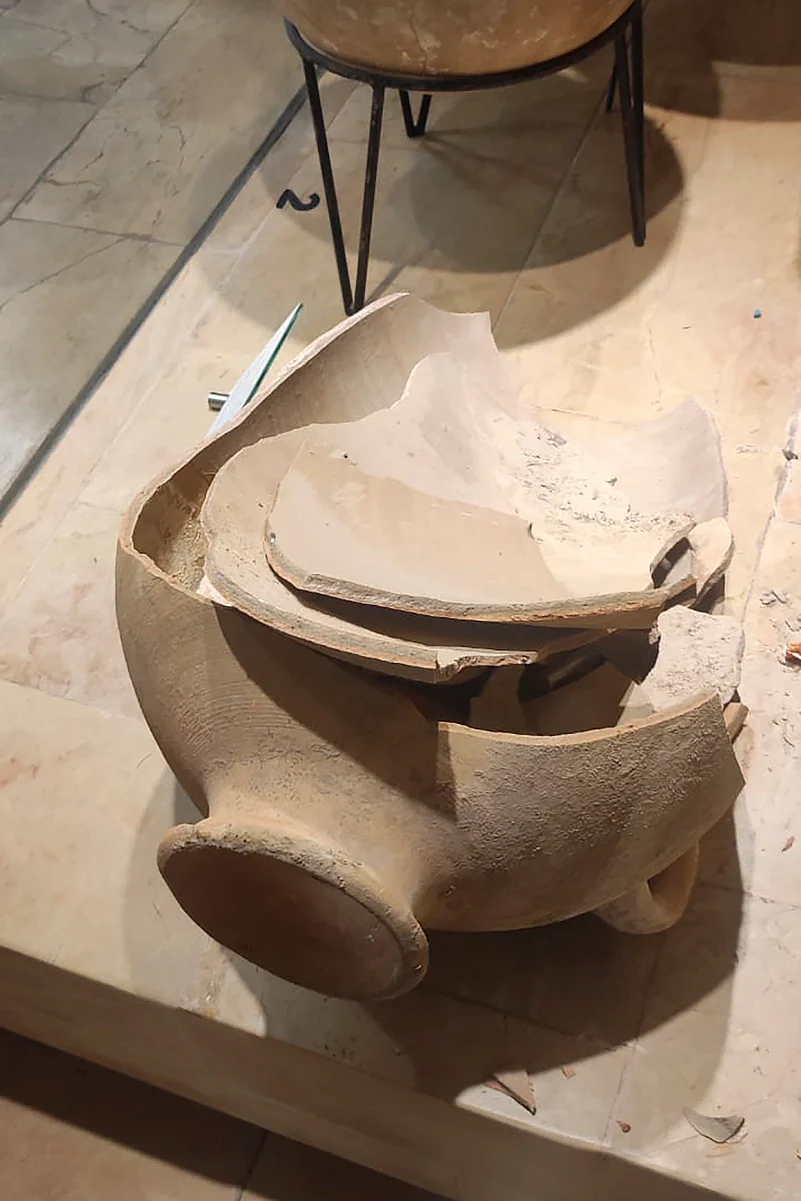A four-year-old accidentally broke a rare 3,500-year-old jar kept at a museum in Israel but was forgiven and also invited again with curators hoping to turn the mishap into an educational moment, reports said.
The boy, youngest of three siblings, is "exceptionally curious", his father said, adding that the moment moment he heard something falling at the museum last Friday, “please let that not be my child” was the first thought in his head.
“He's not a kid that usually destroys things, he just wanted to see what was inside,” the Associated Press quoted Boy's father Alex Geller as saying.
The Jar That Broke
The incident took place at Hecht Museum which is associated with Haifa University in northern Israel. Inbar Rivlin, the director of the museum, said the Bronze Age jar was one of many artifacts kept in the open as part of the vision of letting visitors explore history without glass barriers.
The jar, which had been on display at the museum for 35 years, was one of the only containers of its size and period that was still complete when it was discovered. It dates back to 2200 and 1500 BC and was likely used to hold wine or oil.

Rivlin said the jar was displayed at the museum entrance, adding that the family quickly left without finishing their visit. She said she wants to use the restoration as an educational opportunity and make sure they feel welcome to return.
'Prayed It's Not My Son'
Geller and his family live in the northern Israeli town of Nahariya, just a few km (miles) south of the border with Lebanon, in an area that has come under Hezbollah rocket fire for more than 10 months in a conflict linked to the war in Gaza, according to the AP report.
They were spending the summer break visiting museums and taking day trips around Israel to escape the tensions, boy's father Geller said.
There were a lot of kids at the museum that day, Geller said and added that he prayed the one who caused the damage to the artefact was someone else and not his son. When he turned around and saw it was his son, he was “in complete shock”.
“My wife responded faster than me, she grabbed our son to take him outside and calm him down and explain that it was not OK what had happened,” said Geller.
He went over to the security guards to let them know what had happened in hopes that it was a model and not a real artifact.
“We said, if we need to pay we will, whatever will be will be. But they called and said it was insured and after they checked the cameras and saw it wasn't vandalism they invited us back for a make-up visit.”
Roee Shafir, a restoration expert at the museum, said the repairs would be fairly simple as the pieces were from a single, complete jar. Archaeologists often find challenging the task of sifting through piles of shards from multiple objects and trying to piece them together.
Shafir said the restoration will take several days because they use special glue to connect just a few pieces at a time. The process will be documented for educational purposes.
Shafir said he still would want the to keep the artifacts accessible to the public, even if accidents happen. He said it's important for visitors to touch artifacts because that connection can inspire a deeper interest in history and archaeology.
“I like that people touch. Don't break, but to touch things, it's important,” he said.
















